This review has been published as part of our Headline Bikes test, where we put eight trend-setting mountain bikes for 2023 through their paces. Read more about the bikes setting the trend for the year ahead.
Trek’s Fuel EXe electric mountain bike is designed to offer a decent amount of assistance but still handle like a regular trail bike.
Of course, Trek isn’t the first (including the Specialized Levo SL and Orbea’s Rise) to offer such a machine, but issues around motor choice, battery size and potential geometry compromises have put some people off lighter-weight e-mountain bikes in the past.
Could the Fuel EXe be set to change all of that? I certainly think the ‘mid-level assist’ e-MTB might well do.
Trek Fuel EXe 9.9 XX1 AXS frame and suspension

The Fuel EXe 9.9 X01 AXS frame is constructed from Trek’s OCLV mountain carbon throughout both the front and rear triangles.
You might need to look twice to spot that this is indeed an e-MTB because the Fuel EXe has an almost identical silhouette to the recently updated Fuel EX.
Like the Fuel EX, the Fuel EXe gets 140mm of rear-wheel travel (that’s 10mm more than the old Fuel EX) and features the same ABP (Active Braking Pivot) suspension layout, which uses a concentric rear pivot with the rear wheel’s axle, where the chainstays and seatstays meet at the drop-out.
That travel is controlled using a trunnion-mounted air shock, which sits parallel to the seat tube.
Trek claims the leverage curve will accommodate a coil-sprung shock if you’d rather, though.
With a rough calculation using the leverage curve Trek provided (and checking again using the online program, Linkage), the Fuel EXe has around 20 per cent progression. That means using a coil shock should be possible, but it’d likely need to have some kind of ramp-up/bottom-out control for it to work as well as an air shock.
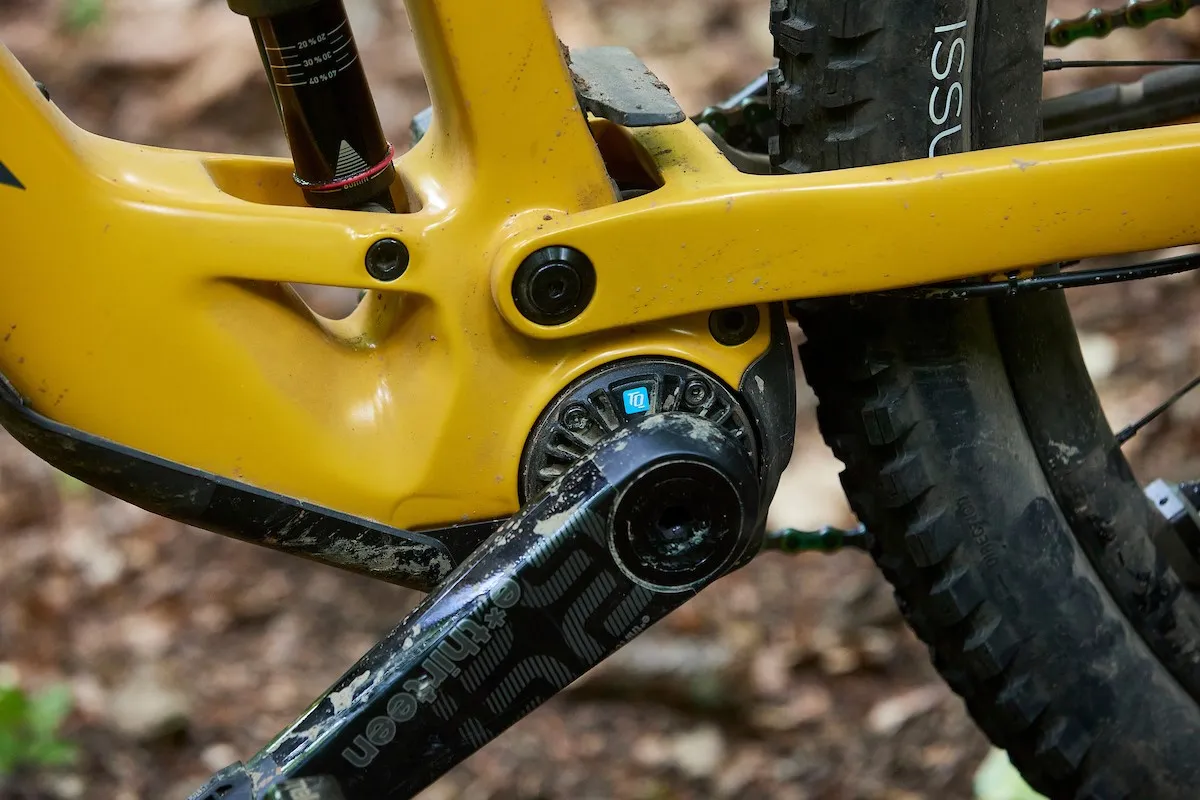
According to Trek, the main pivot has been shifted forwards slightly compared to that of the previous Fuel EX – just as was done with the Top Fuel – in a bid to create more consistent anti-squat figures (in simple terms, a measure of how the suspension system behaves when you pedal).
Trek has ditched its Knock Block steering-limiting device used to prevent bars over-rating and damaging controls and frame tubes. It has done this to ensure there's ample space to fit the integrated display screen into the top tube.
To help reduce maintenance headaches, internal tubing should mean routing cables and brake hoses is less of a pain and, according to Trek, means there’s no need to drop the motor in order to route them correctly.
Other details include clearance through the rear triangle for a 2.5in-wide tyre and a little ‘loam shelf’ designed to help keep mud and gunk from building up in the gap between the chainstay brace and bottom bracket shell.
Trek Fuel EXe 9.9 XX1 AXS motor and battery details

Trek took the gamble of partnering with TQ, a brand not exactly well-known in bike industry circles. It has no shortage of creating drive units for the robotics and aerospace industry, though.
The dinky TQ HPR50 (Harmonic Pin Ring) dishes out 50Nm of torque (for reference, Specialized’s Levo SL and Kenevo SL both pump out 35Nm of torque) with a peak power output of 300 watts, and assistance ranging from 25 to 200 per cent depending on the mode.
It’s not only compact, but light too, weighing a claimed 1,850g which is around 1,000g lighter than Shimano’s EP-8 and Bosch’s Performance Line CX electric mountain bike motors.
On top of that, it’s seriously quiet. TQ say that because the HPR50 can operate at a lower RPM compared to many of its competitors (by around three times), there’s far less noise or ‘motor whine’.
The three modes on offer (dubbed ‘eco’, ‘mid’ and ‘high’) are controlled via the small, two-button controller that sits tight up against the left-hand grip. Trek has included a ‘walk’ mode here, too, which is accessed by holding down the upper button.
An integrated top-tube display offers up all sorts of useful info, including how much battery you have left (as a percentage), estimated range, speed, power (it’ll show how many watts you’re pumping out compared to the level assistance provided by the bike), distance and RPM (revolutions per minute of the cranks). Trek also enables you to customise the display screen to show exactly what you’re after.
Rider-friendly battery details
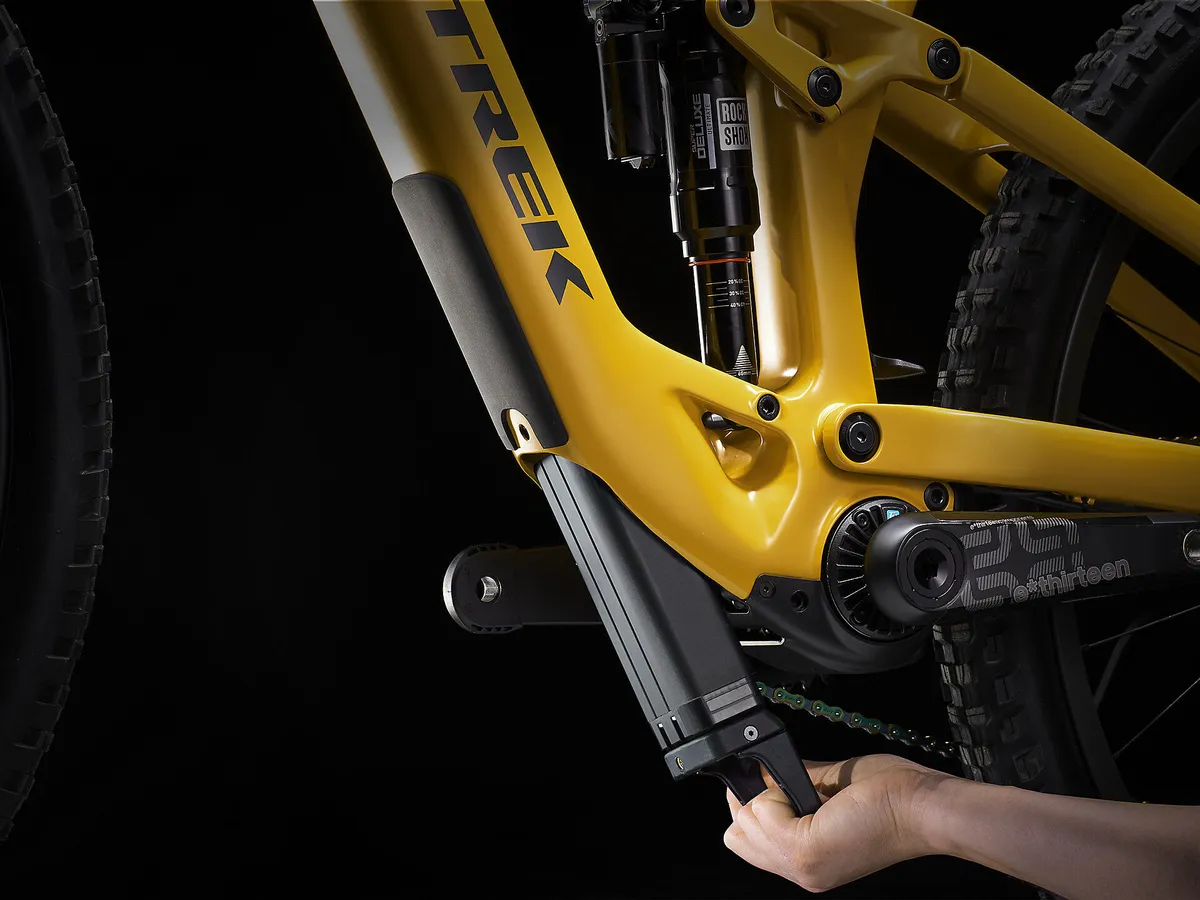
The battery in question here is a 360Wh unit stowed inside the down tube of the Fuel EXe.
Access is via a removable cover that takes less than a minute to whip off. A useful handle on the battery (which can be removed – handy should you want to stow an extra battery in your pack) helps when it comes to getting it out of the frame and adds a bit of protection should the battery slide from the frame and hit the deck.
Charging the Fuel EXe is done via the port located on the upper side of the down tube, just up from the bottle cage.
This location helps to keep the port a little better protected from trail spray, but also means, should you wish to connect the 160Wh range extender (£459.99), the cable (£29.99) to do so is short and its path very direct.
The top-end Fuel EXe, equipped with SRAM’s AXS wireless gearing, features the TQ Smart Box (also available as an upgrade). This includes output ports for front and rear lights, as well as including a cable to power the AXS rear derailleur – meaning you’ve got one fewer battery to worry about charging.
When the main bike battery does die, Trek say there are another 200 shifts left in the rear derailleur, so you should be able to get home or off the mountain comfortably.
Trek Central app
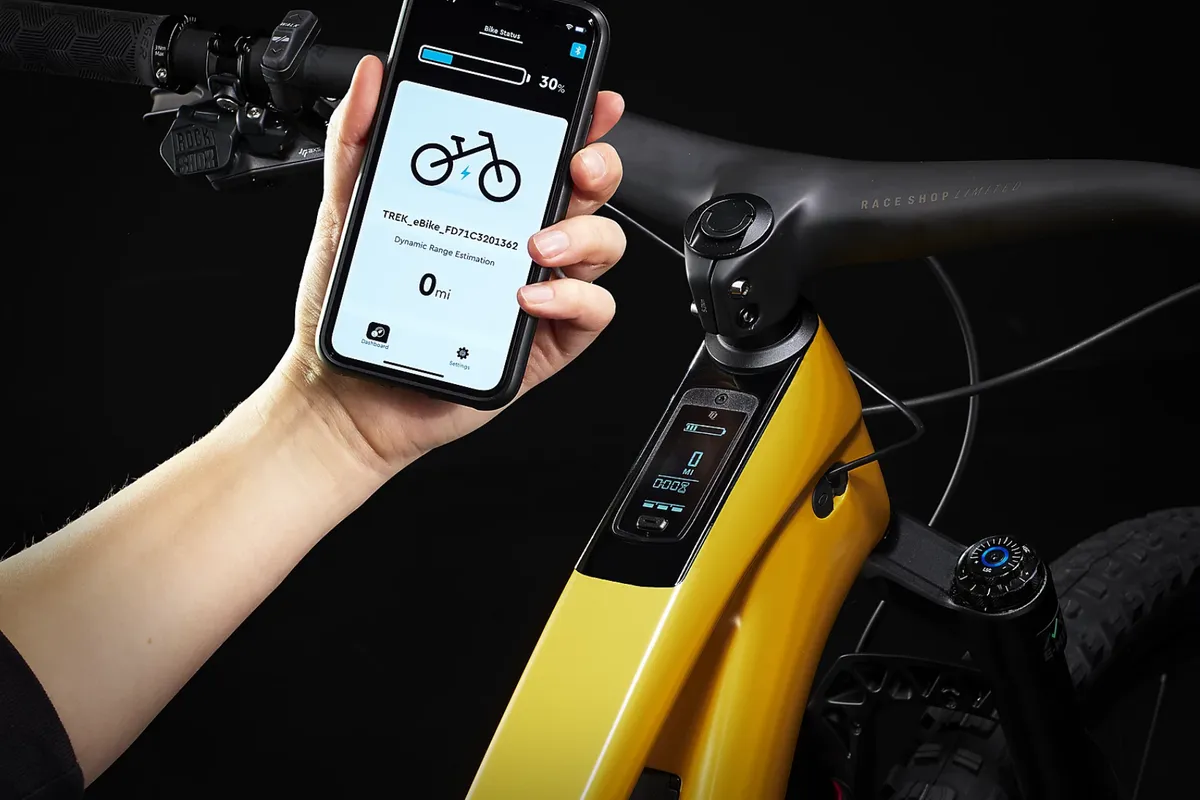
The Fuel EXe doesn’t require the use of the app to be ridden, but if you’re keen on keeping tabs on the motor, tuning the modes and monitoring your rides more closely, it’s all possible via the Trek Central app.
Using sliding scales, you can alter the maximum power of each mode (up to 300 watts), the level of assistance each mode provides and how quickly the motor responds to pedal inputs (‘gradual’ to ‘quick’).
For those with SRAM AXS components, you can also pair and monitor battery life.

The Fuel EXe 9.9 XX1 AXS seen here includes RockShox’s AirWiz on both the fork and shock, along with TyreWiz units at the front and rear. The Trek Central app can provide recommended tyre pressures (once you’ve input your weight) and will indicate the ride status showing either red – outside of the recommended pressure – or green – good to go.
If you don’t have all the wireless gubbins and air-pressure sensors, don’t worry, because the Trek Central app still gives you the pressure calculator. This not only provides pressures for the air spring in the fork and shock, but also the sag measurement (in millimetres) and recommended rebound setting. You also get tyre pressure recommendations.
On top of all that, there are maps and navigation, too.
Should you wish to monitor everything more traditionally, you can easily connect an ANT+/Bluetooth GPS device.
Trek Fuel EXe 9.9 XX1 AXS geometry details

The one-piece bar and stem caused a few issues in testing. Trek promised to deliver a trail e-mountain bike that doesn’t have any geometry compromises and the numbers reflect this.
As ever with nearly all Trek full-suspension bikes, the Mino Link (which is located at the seatstay/rocker) has both high and low settings, altering the head and seat tube angle by 0.5 degrees, and bottom bracket height by 7mm.
This also gives you the option of switching the 29in rear wheel for a smaller 27.5in alternative if you prefer running mixed wheel sizes.
In the low setting, I measured my medium test bike to have a head angle of 64.7 degrees, while the effective seat tube angle sat at 77.5 degrees (with the saddle set at my preferred pedalling height).
Reach (which helps to determine how a bike will feel when stood up out of the saddle) on the medium frame is a respectable 455mm (again, in the low setting). The 790mm front centre is matched to a 440mm rear centre (effective chainstay length).
At 335mm off the floor, the bottom bracket is pretty low, but all Fuel EXe bikes come with 165mm cranks, which makes ground clearance less of an issue.
| Frame size | S | M | L | XL |
|---|---|---|---|---|
| Mino Link geometry position | Low | Low | Low | Low |
| Seat tube (mm) | 380 | 410 | 435 | 470 |
| Seat tube angle (degrees) | 69 | 69.5 | 70.5 | 71 |
| Effective seat tube angle (degrees) | 77 | 77 | 77 | 77 |
| Head tube length (mm) | 100 | 110 | 110 | 120 |
| Head tube angle (degrees) | 65 | 65 | 65 | 65 |
| Effective top tube length (mm) | 573 | 600 | 630 | 657 |
| Bottom bracket height (mm) | 342 | 342 | 342 | 342 |
| Bottom bracket drop (mm) | 410 | 410 | 410 | 410 |
| Chainstay length (mm) | 440 | 440 | 440 | 440 |
| Wheelbase (mm) | 1,186 | 1,215 | 1,245 | 1,275 |
| Standover (mm) | 740 | 740 | 740 | 760 |
| Reach (mm) | 430 | 455 | 485 | 510 |
| Stack (mm) | 618 | 627 | 627 | 636 |
Trek Fuel EXe 9.9 XX1 AXS specification

The Trek Fuel EXe 9.9 XX1 is priced at £13,500. Yes, that’s a serious amount of cash, but should you wish to take the plunge, there’s very little that you’ll want to change (though more on this later).
As you’d expect, the kit here is all top-tier stuff. A RockShox Lyrik Ultimate handles the 150mm of travel using the new DebonAir+ air spring and Charger 3 damper, complete with high- and low-speed compression and rebound damping adjustment. It's fitted with the afforementioned AirWiz.
At the rear, a RockShox Super Deluxe Ultimate RC2T shock, which also gets the AirWiz treatment, offers up high- and low-speed compression adjustment, as well as rebound damping. There’s also a ‘Threshold’ lever that’ll firm the shock up for climbing.
Trek opted to spec the shock with Hydraulic Bottom Out, which helps to create a ‘soft hydraulic cushion’ for the final 20 per cent of travel. Unlike the coil version of the shock, this is pre-set on the air-sprung version and can’t be altered.

SRAM supplies the majority of the drivetrain with the wireless Eagle XX1 AXS system, including the wide-range 10-52t cassette. The crankset, however, comes from e*thirteen in the shape of its E*spec Race carbon numbers. As mentioned above, the arms are 165mm in length and fixed to a 34t chainring.
SRAM's Code RSC brakes are paired with 200mm rotors at the front and rear.
RockShox doesn’t just supply the fork and shock, but the dropper post, too. In this case it’s a 34.9mm, 150mm-travel Reverb AXS post (size medium frame – the seatpost’s drop varies depending on frame size).
In-house parts brand Bontrager supplies the bulk of the remaining kit.
That includes their integrated bar and stem. Bontrager have included a 820mm bar with a 27.5mm rise and 45mm stem length (on the medium, large and extra-large frames).
Bontrager Line Pro 30 OCLV carbon wheels are wrapped in Bontrager SE5 Team Issue 2.5in tyres. Mounted around the valve stems are SRAM/Quarq TyreWiz units to monitor tyre pressure.
Without pedals, the Trek Fuel EXe 9.9 XX1 AXS bike that I tested weighed 18.9kg.
Trek Fuel EXe 9.9 XX1 AXS ride impressions
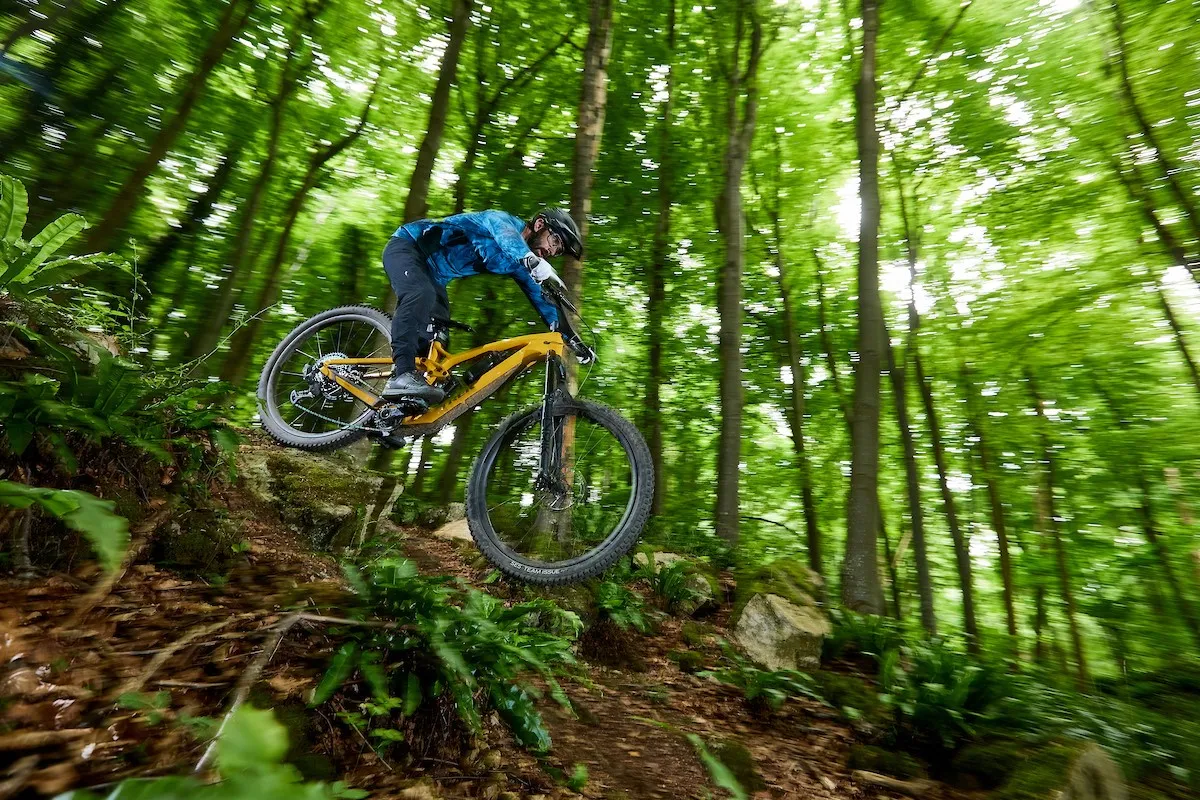
I tested the Fuel EXe 9.9 XX1 AXS on a wide variety of terrain and in many different types of weather conditions.
The majority of my testing centred around the trails of the Forest of Dean, featuring everything from smooth jump lines through to steep, technical root-riddled natural tracks. A weekend in Innerleithen, Scotland, was thrown in for good measure, where the terrain is similar in many instances but the trails generally longer.
Over the course of the test period, the weather varied greatly. While I may have started riding in hot sunshine and on dusty trails, as the weeks ticked by, the temperatures soon dropped and, as you’d expect in the UK, rain rolled in.
Trek Fuel EXe 9.9 XX1 AXS setup
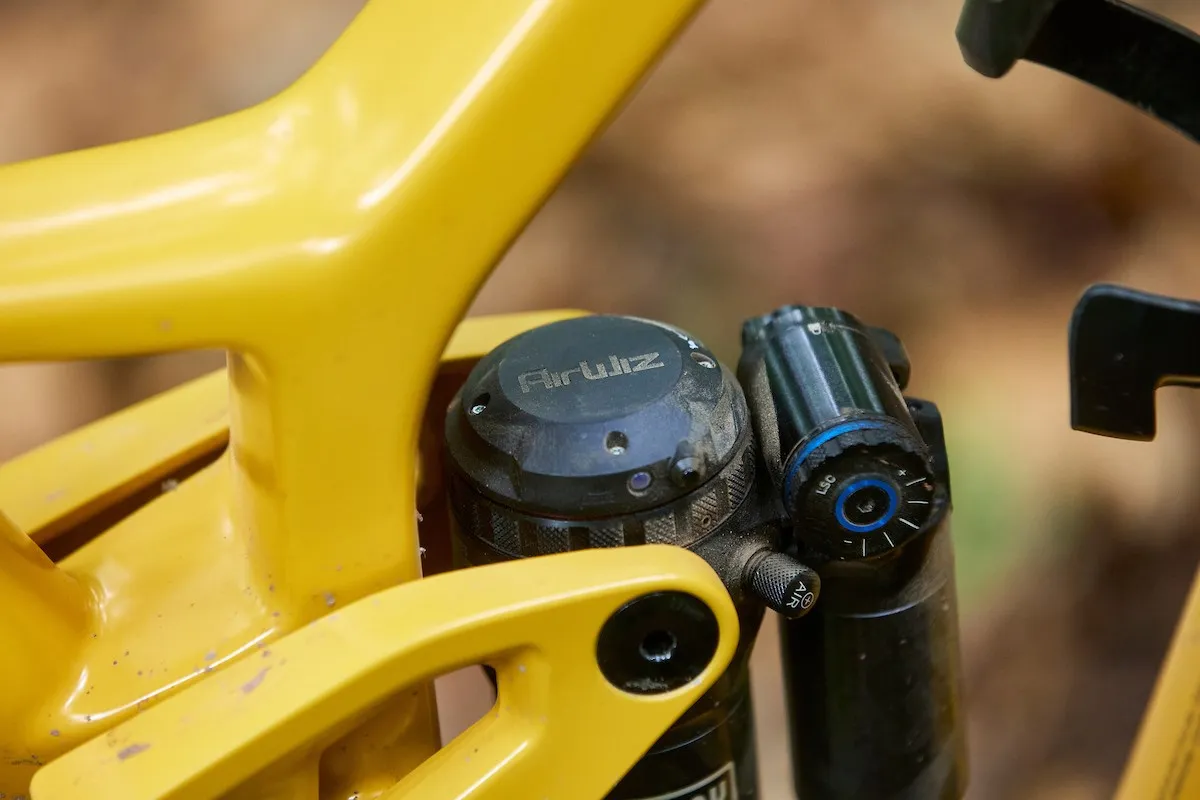
I received the Fuel EXe ahead of the official launch and before the Trek Central app was live. That meant all of the setup at that point was done without any guidance on pressures for the fork, shock or tyres from the app.
After a bit of playing around and based on the advice from the guys at Trek, I settled on running 35 per cent sag at the rear (this equates to 148psi) with all damping adjustments fully open (I weigh 68kg).
Up front, I had 90psi in the fork, which is around 5psi more than RockShox recommends on its spring pressure chart for electric mountain bike use.
When Trek did release the Central app, I found it intuitive and easy to use when it came to syncing components (SRAM AXS parts, along with the Air/TyreWiz units). Motor tuning was straightforward.
In an ideal world, it’d be great if the AirWiz units could help produce some of the tuning data the ShockWiz can deliver, making setup even more accurate. Who knows, maybe this’ll come down the line.
The ‘Ready to ride’ and live updates on fork/shock/tyre pressure is quite useful too, though after a while the battery in the fork AirWiz ran out. While it’s a useful at-a-glance tool to have, you do need to factor in the extra effort required to monitor the additional batteries required to use these devices.
I found the Trek tyre pressure recommendations useful and relatively accurate, too.
I wasn’t exactly sold on the integrated bar and stem combo. I’m pretty picky when it comes to setup, and I found not being able to alter bar roll a little frustrating. In that regard, I’d happily take the weight penalty for a separate bar and stem for more adjustability and it might shave a little off the asking price, too.
Trek Fuel EXe 9.9 XX1 AXS climbing performance
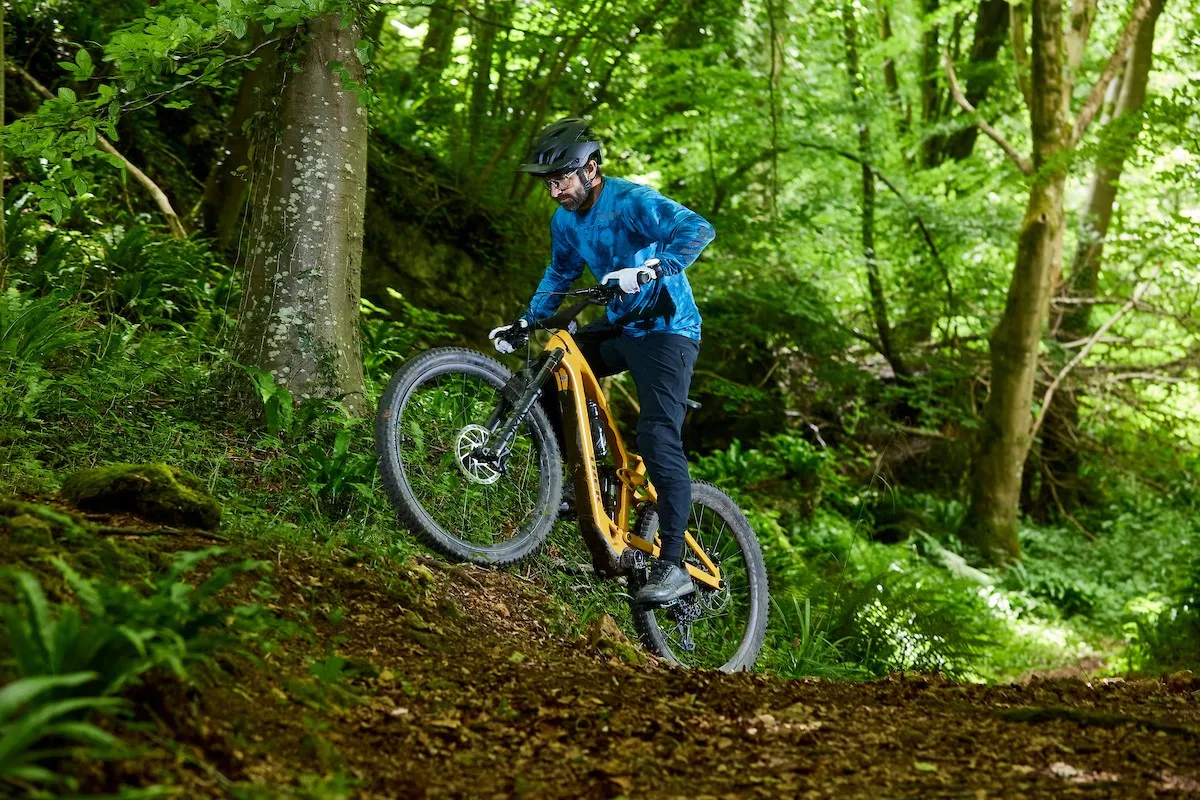
Power is delivered almost instantaneously as soon as you start pressing the pedals. You can fine-tune the motor response via the app, but the feeling as the bike powers forwards feels very natural and intuitive no matter how you tweak things.
This thing is virtually silent, too. There’s a bit of motor noise if you listen for it, but as soon as your tyres start crunching over gravel, you’ll need to strain to hear it.
The way in which the power is delivered, and the rapid engagement, helps to make the Fuel EXe very predictable when taking on technical climbs, especially when the terrain is particularly chunky and pedal strokes need to be timed to perfection.
I didn’t miss the fact that the TQ motor doesn’t feature any overrun (this is when the motor continues to add assistance for a very short time once you’ve stopped pedalling and is common on a number of full-powered e-mountain bikes).
I think this is largely down to the fact that overrun tends to be a benefit when negotiating tricky ascents on full-blown, heavy e-mountain bikes. It can help overcome the weight as and when you need to pause your pedalling to loft the bike up and over a feature, making the movements a little more fluid.
Because the Fuel EXe is relatively light in comparison and feels very natural in the way that the assistance is delivered, I felt I could ride it just as I would a non-assisted mountain bike. This meant pausing when I needed to bump up and over a root step or jagged rocky outcrop, but knowing as soon as I applied power through the pedals, the power would kick in straight away and I could be on my way.
Power hour
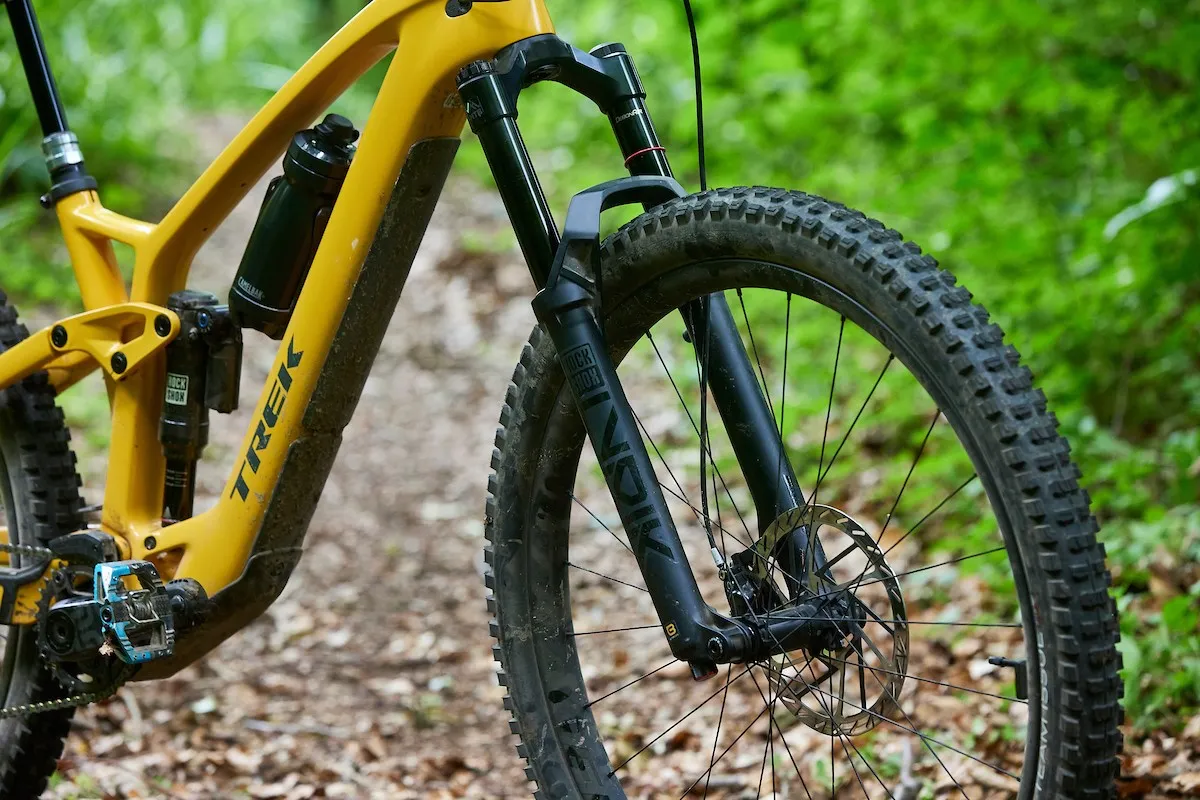
Probably the most common question I’ve been asked about the Fuel EXe is whether or not it can be ridden alongside full-powered electric mountain bikes.
Well, while the Fuel EXe’s numbers aren’t as big as those of a full-blown eMTB, I found I could still ride with mates who were on them, as long as I was in the ‘high’ mode.
Sure, hit a steep incline and you’ll need to work quite a bit harder, simply down to the fact that the Fuel EXe doesn’t offer the same level of grunt as the full-powered equivalent.
However, assuming your friends aren’t boosting off into the distance in turbo mode, you can indeed hit the hills alongside them – it’s harder work, but it is possible, especially if your friends are kind enough to keep their bikes in eco or trail settings.
The whole climbing experience is helped by the geometry. I felt well positioned when seated, down partly to the steep seat tube angle and the space offered by the 600mm top tube.
This put my weight nicely over the bottom bracket, upright enough to keep things comfy when winding my up long hills, yet forward enough that I never felt the need to do any major weight shifts to keep the front wheel down when the pitch of the climb steepened.
While it doesn’t feel as though you’re as upright as when riding one of the best enduro bikes, the Fuel EXe certainly isn’t as stretched out as a downcountry mountain bike.
Although there’s a bit of bob through the rear shock when sat down and pedalling, I’ve not once opted to use the lever on the shock to firm the back end of the bike up because the Fuel EXe hasn’t ever felt particularly inefficient.
Instead, the shock has been left open, enabling it to exploit that supple initial part of its 140mm of travel and keep the rear tyre stuck down, biting into the dirt as best it can.
While I’ve commented on riding with those on full-blown electric mountain bikes, I’ve also ridden the Fuel EXe with zero assistance alongside friends on non-electric bikes. While it’s not a featherweight trail bike that you can easily throw around, it still rides incredibly well and efficiently enough that I had no real issues on decent-length rides with more than 1,000m of climbing.
If you’re wondering about battery range, I weigh 68kg kitted up and managed 32.6km with 1,347m of climbing in the middle mode on a mild autumnal day. Of course, rider weight and style, and trail and weather conditions, will all play their part with battery life, so real-life experiences will vary for different people.
Trek Fuel EXe 9.9 XX1 AXS descending performance

The geometry and suspension balance add up to deliver a lively, yet sure-footed ride feel that feels far closer to that of an enduro bike.
There’s no shortage of stability when it comes to bombing along high-speed sections of trail, while steep, technical chutes can be tackled with confidence thanks to the well-centred ride position offered up.
The weight certainly factors in here. It might not weigh quite as much as a full-powered electric mountain bike, but it’s certainly heavier than a non-assisted trail bike, which does help it stick to the ground.
The frame is taut and unwaveringly solid, but without ever feeling jarring when riding rougher trails. Couple that with the nicely progressive suspension and you’ll soon want to push the Trek harder and harder.
Support through the suspension and the direct frame feel mean the Fuel EXe still offers pop when bouncing through turns or off the lips of jumps, helping to blur the line between non-assisted trail bike and eMTB.
Get stuck into a track dowsed with root spreads and braking bumps, and the control through the rear of the bike is impressive.
The 140mm of travel ramps up nicely as you reach the last few millimetres on really big hits, giving you the impression that there’s even more travel on tap.
However, while there’s an air of enduro bike about the Fuel EXe, get too rowdy and you’ll need to rein things in a bit. That’s partly down to the amount of travel at the front and rear, but also down to the tyres.
While the Bontrager rubber rolls reasonably well and the grip on dry hardpack trails is decent enough, the shoulder tread doesn’t offer much bite, especially in soft, mixed conditions.
This means getting them to break traction is far easier and more common than you’d hope. The SE5s aren’t the best under braking, either, especially when the going gets steep.
To add to that, the tyres need to be tougher. It didn’t take a lot to cut through the rear tyre, which was frustrating. And with traction somewhat limited, it’s tempting to drop the pressures lower. However, this just leads to the tyre feeling somewhat unstable as you push through the turns.
This bike is seriously capable, and the tyres simply struggle to keep pace.
Considering what you’re paying for this bike, though, I’m hoping a tyre upgrade – and a bar and stem swap – would be something Trek might consider at the point of purchase.
Aside from the tyres, there’s very little to complain about when it comes to the spec, though. The transmission is proven and works almost flawlessly, while the brakes are punchy, predictable and make controlling speed easy.
Shock-tune shenanigans

While I managed to get the suspension to a really good place to suit my 68kg weight, lighter riders than me might not be as lucky.
As it stands, the Fuel EXe’s suspension feels well-balanced and manages to track the terrain well, keeping the tyres in contact with the ground nicely, but still delivering support when you need to load the bike up for a rapid change of direction. Suspension performance is good, but I think there’s still room for improvement.
That’s because I’ve got the adjusters on the shock wound fully open in order to get the back end feeling as responsive as I’d like.
Ideally, I’d prefer to have at least a few clicks of adjustment (both rebound and compression) to play with as and when I need them. Sure, as it stands, I can add more, but I can’t take any off. It’s not been a major issue for me throughout testing, but may mean you’ll struggle with setup if you’re lighter than me.
Trek confirmed the shock uses a medium compression tune and I’d be keen to try a lighter one later down the line.
It’s a similar story for the fork, too, which I ended up backing right off while tackling some really rough, techy trails up in Scotland, just to ensure it would recover as quickly as possible and keep the front tyre gripping as best it could.
Am I being picky? Yes, I certainly am. I managed to get the suspension performing well, but if I get the chance, I’ll try to get the shock re-tuned and the compression lightened up a bit.
Blurring the lines
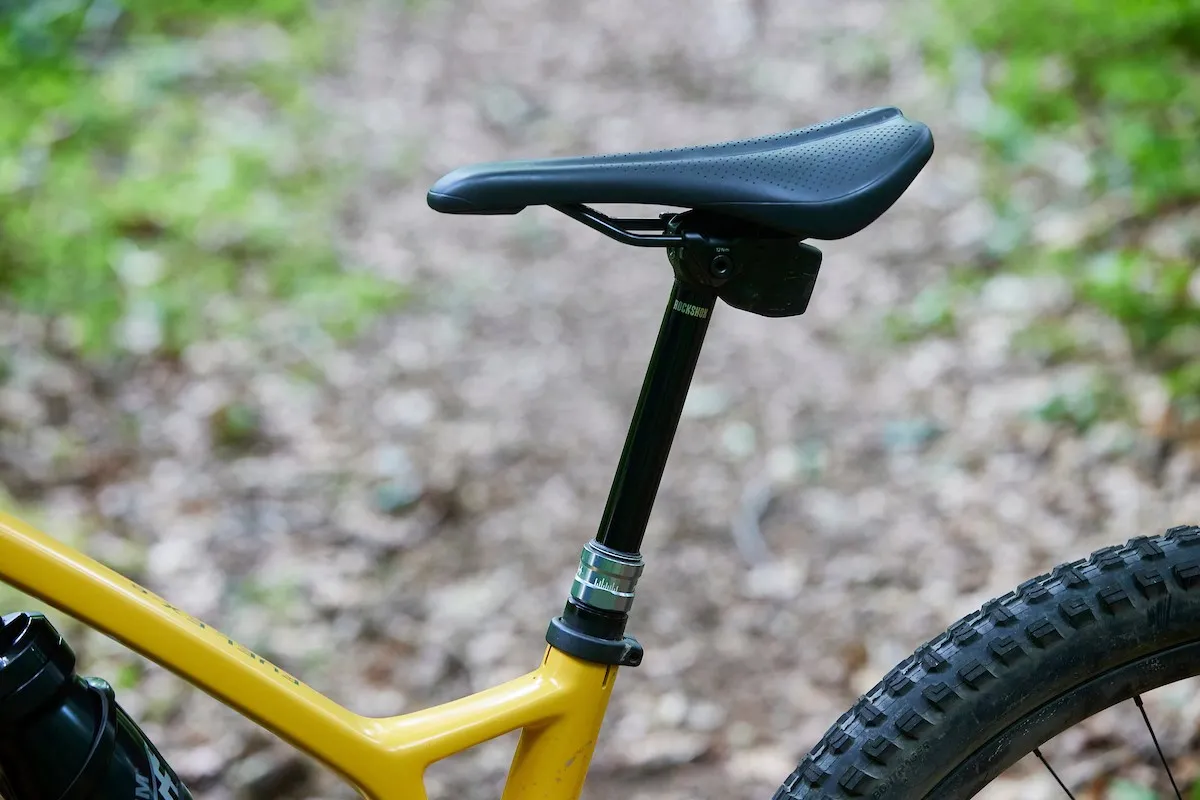
There’s no getting away from just how good the Fuel EXe is, niggles and all. Trek has done a great job, managing to straddle the line between assist and non-assist bikes in impeccable fashion.
On long, mellower, flatter trails, where a full-powered electric mountain bike can feel cumbersome and hard work, especially once you’ve exceeded the motors speed limiter, the Fuel EXe simply does not.
It responds to inputs and rides like a non-electric trail bike, albeit one that’s a little heavier. And that’s a big part of the goal here. The fact that it's almost silent is a massive plus in my opinion.
Overall, I think it’s fair to say Trek has managed to create a bike where the motor and the assistance it produces never feels like the overbearing focus, but rather it blends into the background.
Yes, the help is on tap when you need it, but its application is natural and easy to tune into. The cohesive way in which Trek and TQ have woven the motor, battery and geometry together to make a bike that rides as well as it does means the Fuel EXe is one of the best examples of a lighter weight eMTB out there.
How does the Trek Fuel EXe 9.9 XX1 AXS compare?
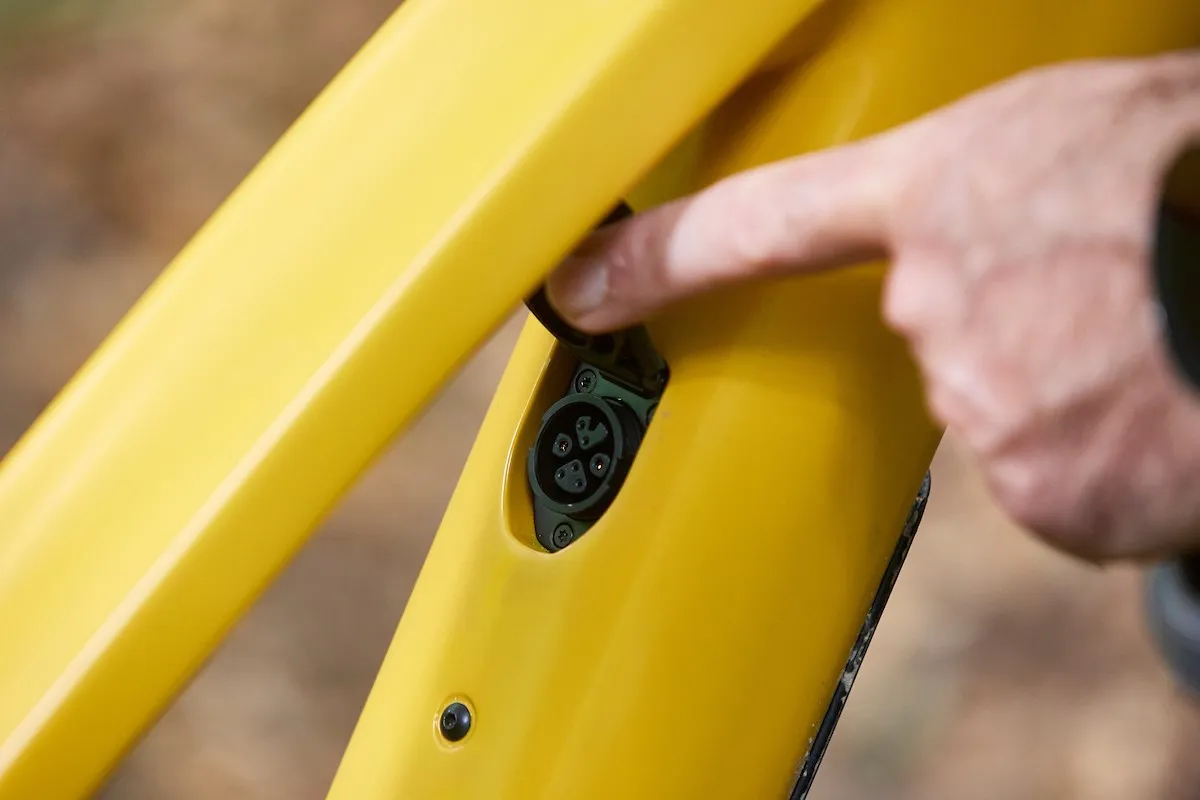
My most recent experience on a bike similar to the Fuel EXe 9.9 XX1 AXS is when testing the Specialized S-Works Turbo Kenevo SL.
The Kenevo SL is similarly priced, but its intentions differ somewhat, leaning more towards enduro riding and racing. There’s more travel and geometry adjustment on tap, too.
For that reason, the main focus for me is to compare how the motors feel. The TQ system will, assuming other friends on e-mountain bikes will tone down the power/mode, enable you to ride alongside full-power ebikes. You’ll have to work harder, but it’s possible.
The Kenevo SL, however, is somewhat under-gunned in this department, producing just 35Nm compared to the Fuel EXe’s 50Nm. Riding with others on full-powered e-mountain bikes isn’t really a viable option, certainly not over any decent distance, at least.
When it comes to noise, the TQ system is far quieter than that used on the Specialized, which easily drowns out tyre rumble while on the move.
You also can’t remove the Specialized’s battery, unlike the Trek's. The Fuel EXe’s charging port is in a better-protected position too, avoiding the need for a long extension cord running from the port to the bottle-cage mounted range extender when you plug it in.
It’s a neater solution that might not be ground-breaking, but is a more refined and elegant approach to the same problem.
The drive unit from Specialized is bigger and heavier. Specialized hasn’t had to compromise on geometry, but the Kenevo SL has been criticised for the fact that seatpost insertion is somewhat limited.
That meant I struggled to use the 150mm-travel dropper post supplied with the bike. This wasn’t an issue with the 150mm dropper post that came with the medium-size Fuel EXe.
I think the big takeaway here is Trek has had the time to assess the competition, work out what they’ve done well and what could be better before delivering a slightly more refined product to market (when it comes to the drive unit and battery, that is).
Trek Fuel EXe 9.9 XX1 AXS bottom line
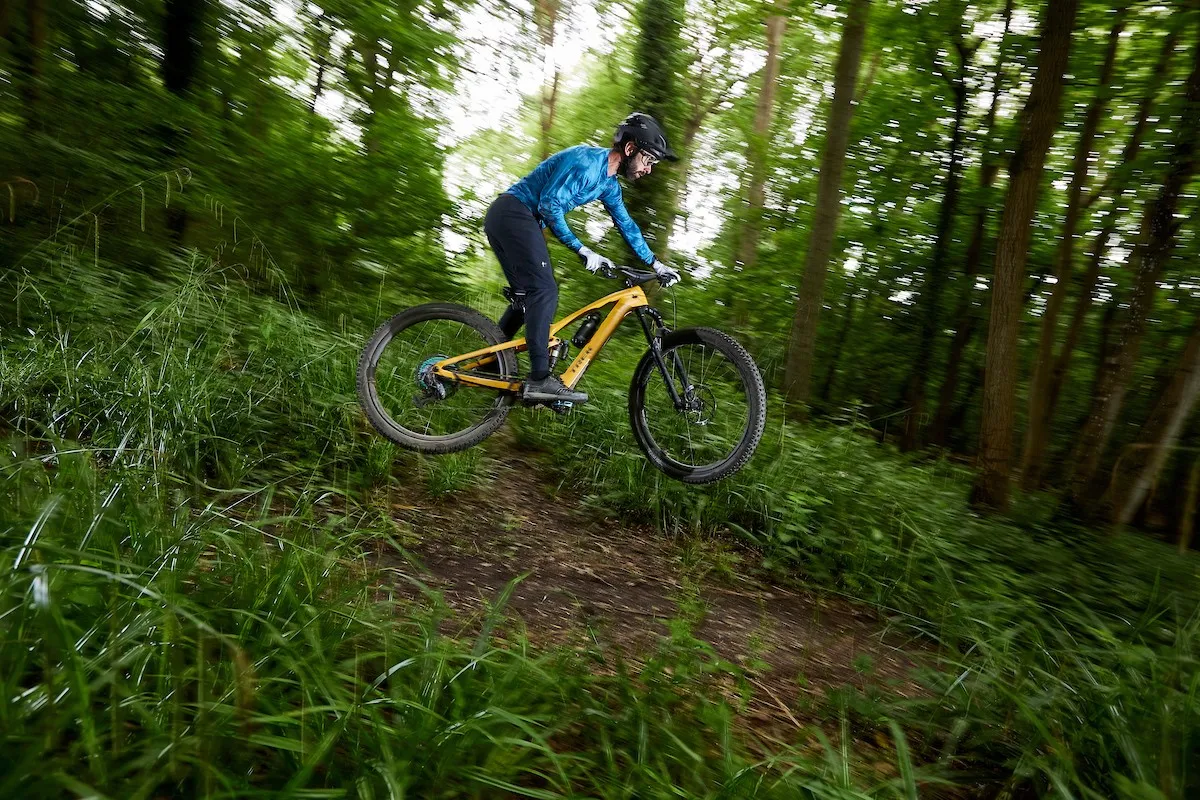
There’s no getting away from the fact that the Fuel EXe 9.9 XX1 AXS is an incredible piece of kit and performs exceedingly well on the trail.
A tyre swap would make it even more capable, and for lighter riders it’s worth taking the time on the suspension setup (or even seeking out a shock re-tune) to really make the most of it.
A two-piece bar and stem would also improve adjustability, but some might like the fixed-position bar/stem combination fitted to the EXe.
The price is the hardest thing to swallow, though. Thankfully, Trek offers cheaper models starting at £6,400 for the Fuel EXe 9.5. While the spec is certainly less bling, you get the same frame, motor and battery, which is the biggest draw here.
It feels as though Trek has really delivered on its original promise with this bike. A couple of spec changes and some tweaks here and there don’t hold it back from being one of, if not the best, bikes in its category.
Product
| Brand | trek |
| Price | 13500.00 GBP,14000.00 USD |
Features
| Fork | RockShox Lyrik Ultimate, 150mm travel |
| br_stem | one-piece carbon bar and stem |
| br_motor | HPR50 motor from TQ, 50Nm of torque |
| Tyres | Bontrager SE5 29x2.5in |
| br_brakes | SRAM Code RSC |
| br_cranks | e*thirteen |
| br_wheels | Bontrager Line Pro 30 carbon |
| br_seatpost | RockShox Reverb AXS dropper |
| br_handlebar | one-piece carbon bar and stem |
| br_rearShock | RockShox Super Deluxe Ultimate |
| br_rearDerailleur | SRAM XX1 AXS |
| Features | Extras: SRAM TyreWiz and AirWiz |
